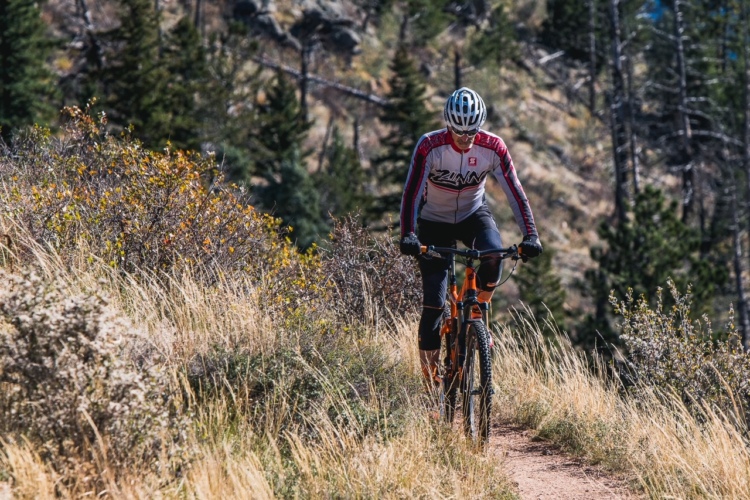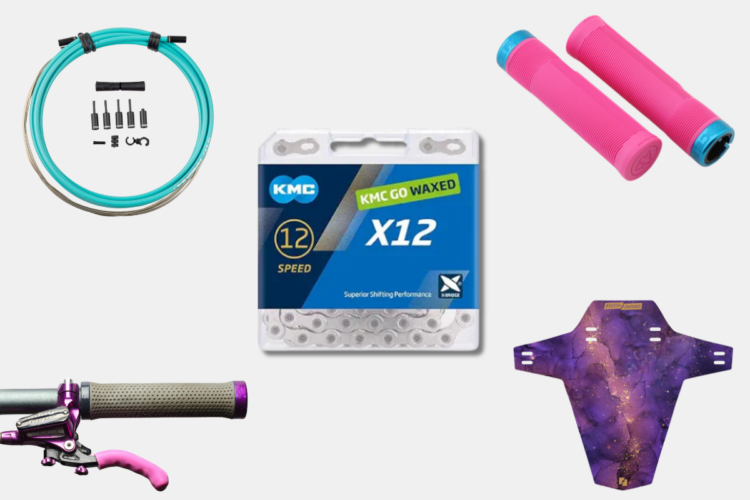
Along with big updates to the XT drivetrain, Shimano is also rolling out improvements to their XT and SLX brakes.

For starters, both XT and SLX brakes will now be offered in 2- and 4-piston options. While a 4-piston XT brake was recently added, this marks the first time a 4-piston option is available in the SLX line. Each line will have a single lever that can be used for either the 2- or 4-piston brake.


Speaking of levers, the new XT design sees the most changes, many in line with the updates to XTR last year. The lever itself becomes both taller and flatter for improved ergonomics. There’s still tool-free reach adjust and Servo Wave tech (which is what allows Shimano brakes to bring pads into contact with the rotor so quickly), plus a new support point (shown above) that reduces flex at the lever. Essentially the support is a secondary contact point with the handlebar to give each pull a consistent feel. That is, all of the force goes into pushing pistons rather than some of that force pulling the whole lever and reservoir toward the bar.

Shimano is also trickling down Freeza rotor technology to the XT line as well. XT rotors will be available in 140mm, 160mm, 180mm, and 203mm sizes and are essentially the same as the XTR version, minus an additional (and apparently expensive) heat-dissipating coating.
On the trail

Brakes, like a lot of things in the mountain bike world, can be a polarizing subject, and everyone seems to have a brand preference. Generally, I like the feel of SRAM brakes over Shimano because they feel less “grabby” and easier to modulate. However, the new Shimano XT brakes may have me rethinking my preferences.
For starters, I learned pad selection can significantly influence the feel of a set of brakes. Shimano mountain bike product manager Nick Murdick says, “Some people feel like our brakes have got a little bit too much initial bite. I highly encourage those people to try the resin pad because it takes care of exactly that. This is actually a new resin compound that we introduced with XTR [2-piston brakes] and now there’s XT and SLX versions. […] It’s got a really nice feel, the way that the power ramps up. Like when you really get on the brakes hard, it actually starts to bite really, really well. […] It’s dead quiet too […] and it is 40% more durable than the old resin pads, which is a pretty big step.”
The 4-piston XT brakes offered more than enough power for me on the steep descents around Bellingham. I was also impressed with the seemingly more forgiving modulation in the new XT brakes. Despite the muscle memory I’ve built up over years of using other brakes, the XTs never surprised me on the trail or felt overly grabby.

For the most part all of the XT brakes in our test group stayed quiet through both wet and dry conditions. Shimano brakes are known for being quieter than some of their competitors in the wet, but they still squawk from time to time. Another thing I learned on this trip is the best way to quiet wet, noisy brakes is to jam on the brakes really hard three times or so, rather than lightly applying the brakes to try to squeegee the moisture off.
Pricing for the new XT brakes is set at $209.99 for a single caliper/lever combo, plus $52.99 for an XT rotor, with brakes available starting June 14, 2019. SLX brake components are priced at $174.99 and $29.99, respectively, and will begin shipping in July, 2019.
More info at mtb.shimano.com.











3 Comments
May 30, 2019
I have been questioning many processes in the industry for decades and discovered 20 to 25 years ago that the tendency of manufacturers to produce only new and not to improve - on the contrary - the planned obsolescence I assume today almost every manufacturer. those who today are committed to environmental protection and ethical action, with regard to our environment, should in my opinion set a standard for quality, technical advice and, above all, quality. Today, most products are designed to be defective after two years> planned obsolescence
May 30, 2019
May 30, 2019